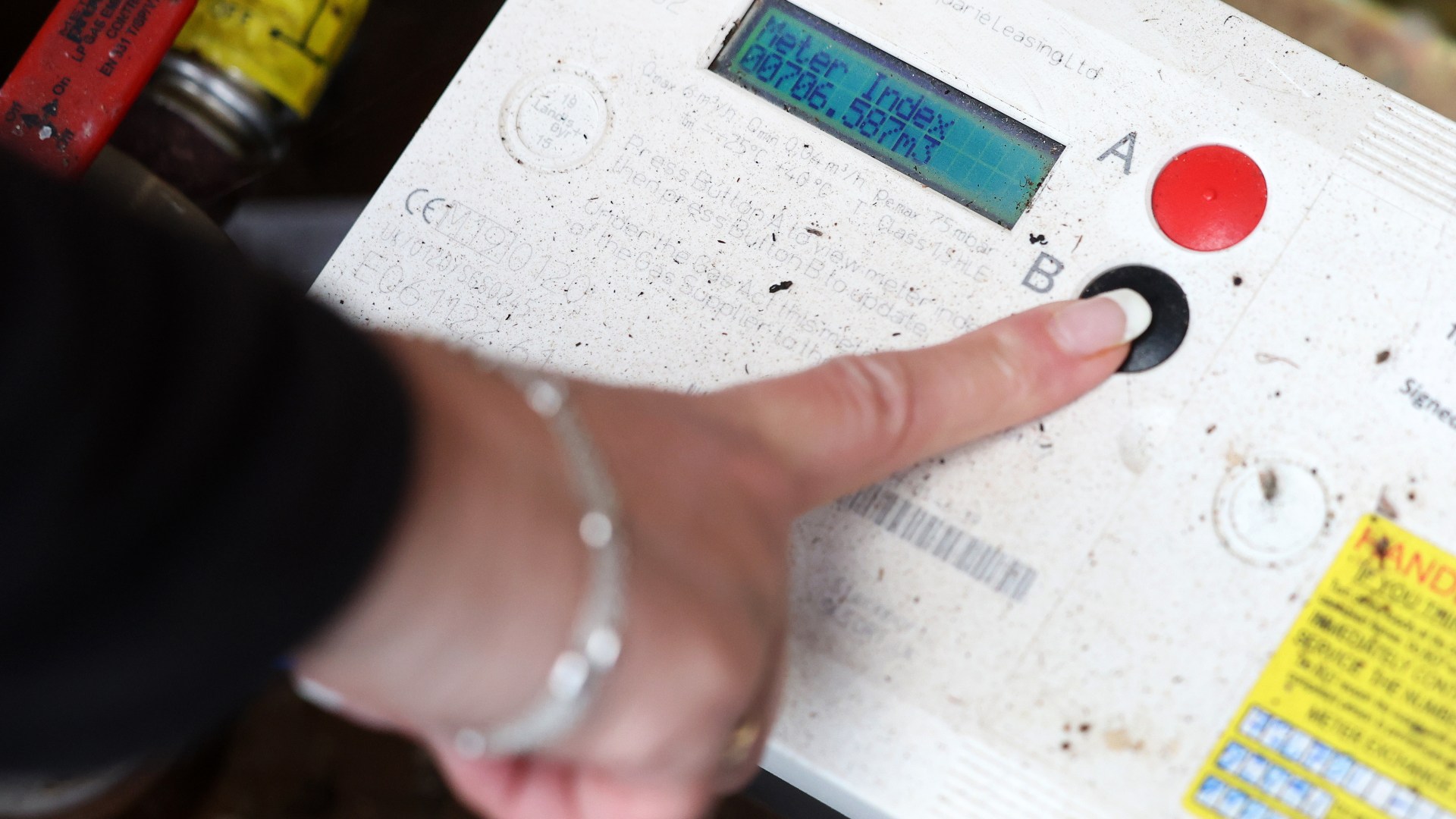This is an audio transcript of the Working It podcast episode: ‘Working It live — How to get ahead without burning out’
Isabel Berwick
Hello and welcome to Working It from the Financial Times, I’m Isabel Berwick.
[MUSIC PLAYING]
This week, we’re bringing you something a little different. Earlier this month, the FT held its annual Weekend Festival at London’s Kenwood House. There, I had the pleasure of speaking to Dr Audrey Tang, a chartered psychologist and award-winning author.
Audrey’s work looks at practical tools for wellbeing. We sat down for a session called How to get ahead in your career without burning out. So if you want to learn how to take better care of yourself at work, how to spot when a colleague is near breaking point and what the most resilient professionals have in common, sit back and enjoy.
[MUSIC PLAYING]
Well, hello, everyone and thanks for spending lunchtime with us. I’m Isabel Berwick. I’m the host of the Working It podcast. I write a newsletter for the FT of the same name, and I recently wrote a book called The Future-Proof Career. And I’m delighted to be here in this session sponsored by Pearson Business Book Club. And I’m gonna be talking to Dr Audrey Tang about how to get ahead in your career without burning out. No biggie, Audrey.
Audrey is a psychologist. She’s a broadcaster. She’s the author of several books, including The Leader’s Guide to Wellbeing and another one to Resilience, isn’t that?
Dr Audrey Tang
Yes, Leader’s Guide to Wellbeing, Resilience and Mindfulness; Head Heart Gut trilogy.
Isabel Berwick
She’s also a theatre writer and performer, and she’s brought props today. So this is not gonna be your average discussion. So I’m gonna crack on. Audrey, it’s so great to be here. We’re here to talk about thriving in our careers without burning out. But before we start, can we just define what is burnout? Because I read an awful lot of rubbish about burnout.
Dr Audrey Tang
Yes. Burnout generally is when we are so emotionally, physically and socially exhausted, usually ascribed to work that we cannot function whether it’s with our friends or whether it’s in the workplace. Even if we want to, we just can’t do it. It affects our day-to-day living.
Isabel Berwick
OK. So it’s actually . . . It is quite a serious condition, isn’t it?
Dr Audrey Tang
It’s not just a little bit of stress. I mean, an old model of stress was as soon as you’ve triggered the stress, the alarm goes off and you get into a state of resistance. And that’s like the elastic band going out here. But of course, if you stretch it and stretch it and stretch it, that resistance gets too much, and either the band breaks or it goes completely flaccid and you can’t do anything with it. It doesn’t function as a band any more. That’s burnout. It’s when you physically can’t do it. And even with the best will in the world, you often have to get medical intervention to support you.
Isabel Berwick
So that’s the end result we don’t wanna get to.
Dr Audrey Tang
You don’t.
Isabel Berwick
Now, what strategies do you advise senior leaders to employ to keep afloat, you know, when they’re under such pressure and always overwhelmed, actually?
Dr Audrey Tang
Yeah. Well, the first thing — I know it sounds so obvious — is seek support, seek help. But the problem is, if you seek support and help from your families, what you often get is told, oh, just leave. Just don’t do it any more. But you don’t want that.
So sometimes it’s best to seek support or help from a mentor or somebody who understands you at your level. The other thing is, recent research has come out of the University of Zurich by Dr Lauren Howe and she talks about how when leaders reach out for help and then tell their teams, this is what’s worked for me, more people are likely to take up that help compared to just it being anonymous or it being free or any of those other incentives that you might have. So the leader role-modelling having that support makes a difference.
Isabel Berwick
So the leaders can model . . . (overlapping speech)
Dr Audrey Tang
Absolutely.
Isabel Berwick
But you talked a little bit there about leaders saying I’ve sought this help.
Dr Audrey Tang
Yeah.
Isabel Berwick
I mean, vulnerability is all well and good, but the reality is that their teams might judge them. So how does one find that balance?
Dr Audrey Tang
It’s not easy. So you do have to start by doing it. So reaching out, asking for help rather than taking all on — because if you break, if that band snaps, who else is going to do that work? But it’s not easy for that person.
However, you need to think about what sort of organisation do I want to be leading because the organisation will take on the persona and behaviour of the leader. You will see it, you will go into an organisation and you will see if everybody’s very, very stressed, you can tell where it’s gonna come from. Because often, without necessarily saying this is why you must do the work, if people are feeling pressure, they will pass pressure on to somebody else.
So it has to start from the top. And if you want to lead an organisation that will ask for support, you need to start to model that.
Isabel Berwick
Oh, and so we have a question here at the front. Have you got a mic?
Audience member 1
Thank you. And my question is, if you’ve inherited a team, how do you then deal with that? Because those traits, as you mentioned, are already passed down from that previous person on to the team, so it’s changing a subculture of a team.
Dr Audrey Tang
It really is. Don’t go in there and try and change everything right away because you’re going to be met with resistance. But if you go in and match what’s going on, just see, have a look how are they functioning. Pace along with them. OK, that’s what happens here. That’s when you can start to change the direction.
You see it in an aerobics class, for example. If you go in and suddenly change the moves, the whole class gets confused. But if you get everyone marching on the spot and then change the moves and inform people this is what you’re doing, and don’t throw every single (inaudible) at the same time, you’re more likely to get the changes. But it’s gonna take time.
Isabel Berwick
OK. I like that. So, Audrey, you write a lot about resilience, which is a particular bugbear word of mine, and wellbeing, which is another bugbear word of mine.
Dr Audrey Tang
Great.
Isabel Berwick
So what do those really mean? What is a practical way of putting those into practice? And how can we use them in our working lives?
Dr Audrey Tang
Well, let’s use the WHO definition of it, which is being able to function in our day-to-day lives. We can solve problems, we can have healthy relationships, we can engage in work — all of those things in a positive way. That’s what the WHO says for wellbeing.
When it comes to resilience, the research actually suggests that what happens when adversity occurs is that you can either just completely get injured and taken out by it or you can get through, but have those injuries or you can bounce back.
Or — the fourth category is what we wanna aim for — is all of those adversities will have made differences in your persona, differences in the way you function, to allow you to go further, to spring forward and to thrive.
If you have plain sailing all the way through, how do you know that you’re gonna be able to cope? But if you’ve actually had to overcome something, what happens is you then have a new network, you have new strategies, you have new coping mechanisms, and you’re able to not only come back to where you were, but actually go forward — which is where I take resilience from.
It’s about thriving. It’s not just about bouncing back, which also sounds a bit negative, but going forward.
Isabel Berwick
OK, so we can take the bad stuff that happens to us in our careers and actually have some sort of growth? Is that the right word?
Dr Audrey Tang
Yeah, absolutely. And you will find new ways of working and new ways of coping, because if you have asked for help or if you’ve discovered things for yourself, those changes will support you.
Isabel Berwick
So where do you stand on the issue of . . . I mean, this is the thing. I have the problem with where companies give a lot of resilience training and they’ve sort of put it all on the individual, whereas often it’s a structural issue with overwork or a badly organised company. How can you protect yourself against the dysfunctional organisation?
Dr Audrey Tang
In terms of protecting yourself, you do need to build up your own, I guess, buffer to stress. Positive psychology would suggest — and positive psychology is not an alternative therapy or anything like that — but positive psychology would say, is if you build up things that boost your mood, that can actually build a buffer to stress. Those things can also reduce cortisol when you’re facing the stress, which means that you can come down from the stress a lot more easily.
The building up your own resistance, building up your own buffer or toolkit of positive experiences can make a huge difference for individuals. I was gonna save the other answer till the very end, but given that you’ve brought it up now, I’m gonna give this one now. And this is about the structural issues.
This is a new part of psychology. It’s known as psychosocial safety, psychosocial safety. And it’s a research (inaudible) is doing this right now. Psychosocial safety is like taking a health and safety approach to psychological wellbeing.
Let me give you an example. You go into work and you fall down a hole. OK. What do they do? Health and safety comes in and they fix the hole. Health and safety does not come in and say, oh, well, let’s not . . . instead of going to the root of the problem, let’s teach you how to walk around a hole. Let’s teach you how to get out of the hole. No, they don’t do that. They fix the hole. It’s the same thing.
If you build up your own resistance, that is only part of the story. What you do actually need to do is look at the toxicity or the environment that’s caused the problems in the first place, and that’s what psychosocial safety is all about. It is about getting leaders in organisations to understand that there may be systemic and structural issues as well that are causing the problem and treating it like a health and safety.
Isabel Berwick
Hear, hear. Let’s hope. So what are some of the most common unhealthy behaviours you see in terms of people that you consult with, or companies, you know, that . . . what are the flashpoints that could lead to burnout, collapse, that kind of thing?
Dr Audrey Tang
One of the most common things that people think when it comes to feeling stress and burnout is that person will go and behave out of character. So that is something that will happen. They have a certain baseline. Suddenly they start volunteering for everything or volunteering for nothing, depending on what their baseline is.
But having spoken to a lot of workplace psychologists, especially those who work with men, withdrawing is the key thing — going silent, not talking to anyone, keeping their head down. And that’s something that we don’t always look out for because we might think, oh, well, they’re just getting on with it and they’re actually not.
So having the support available and making sure everyone knows the support is there, it’s accessible and the leader modelling that they’ve used it can be the most helpful there. But it is recognising anything that goes against the baseline, but importantly also especially for men and sometimes women as well, the withdrawal is a big thing to look out for to support.
Isabel Berwick
That’s really interesting because I’ve done a bit of work around loneliness and that is particularly an issue for men, is it not? And that’s something that isn’t talked about very much and I would like people to talk about it more.
You know, women are not equal in the workforce, but that doesn’t mean to say we shouldn’t talk about men. And I get this all the time and I don’t know, on LinkedIn, you might see people posting about men and loneliness and people will say, but you know, but what about women and their problems? And actually, these are not, you know, problems and it’s not a hierarchy of problems.
Dr Audrey Tang
No, not at all. And it’s also a case of it’s not men are like this and women are like this. If you talk about issues and you’re there and you’re known as somebody who is a safe person to come and talk to, people will come and talk to you.
Isabel Berwick
Right. Thank you. We had a question here at the front.
Audience member 2
Hi there, thanks. How do you think the move to more sort of distance working and working from home, how do you think that has impacted some of these things? I mean, you touch on kind of loneliness and I always worry about new members of staff coming into the workplace. I’m just interested in your thoughts on that.
Dr Audrey Tang
Yeah. The problem with the pandemic is that it’s not just a case of, now some people are working from home, some people aren’t. You’ve got to actually go back to the fact that a lot of, it was my third year students at university were having lessons from home that whole year. The master’s students then went into another year of working from home, and then they went into a job where people were, they only recognise them by their eyes. So it’s a real problem that’s actually, it goes further than just working from home. However, saying that, what working from home has done is it has helped, it’s known as the second shift and it is usually women, people who are doing the household chores, the other looking after the children, because people have been able to find some flexibility. It’s not that working from home is all bad.
So we’ve got to be aware of who needs what. One of the key things I would say, and it’s a structural thing, is if you are working from home, make sure you’ve got the technology to be able to do it, because otherwise that impacts stress. And if you are bringing people into the office, make sure there’s a reason why they come in. Because if they’ve come in and all they’re doing is sitting in their own offices on a Teams meeting, that’s not productive. So it changes the way of working in general, but it means that things that were working before maybe have to be adapted and we have to be open and listen to people who are actually going through it.
But when you talk about helping and supporting people, we’ve got to remember, take it back a little bit further than just working from home right now. They’ve been affected by the pandemic in lots of different ways.
Isabel Berwick
So let’s flip it and talk a bit more about success, you know? Longevity at the top. A lot of people here will have very senior jobs. Are there characteristics that you see that are common to people who survive and thrive at the top?
Dr Audrey Tang
Definitely. We all know learning from failures, but how many people learn from successes? Back in the 80s, Forbes wrote a brilliant paper on why leaders don’t learn from success. And this rings true today. When you fail, you go away, you lick your wounds and then you come back and learn from it. Great. Everyone understands that. But when you succeed, we don’t think about it. However, what this article says and it’s something that’s just. . .
It can be distilled into two points. If you look at that success and the first thing you do is think about, well, how much of that was down to me and my team? That gives you something very, very useful because it could have been, you know, the stars just aligned. It could have been luck. It could have been the social surroundings. So many things could have impacted that success. How much of that was down to me? That’s the first question. Or my team or my organisation, my input.
And the second question is how much of that therefore is replicable? And that’s where you can then start saying, so next time we need to do this, this and this. It’s not a case of going, I succeeded, now I need to have a postmortem for it. But it is a case of saying, I’ve succeeded, learn something from that. And that’s what leaders who spend a long time at the top are able to do.
The other thing is they often focus on strengths rather than skills. And this is something for all us individuals out here as well. We have both strengths and skills. And again, this is a positive psychology term they use. Skills are things we’re very good at, and we learn to be better at, and we often get promoted on, but they exhaust us. Strengths are things where we just do them and they energise us. And so if you can draw up just two columns, strengths versus skills and look at them and decide which ones are your strengths that you get a lot of energy from and which ones you’re really good at but you really don’t enjoy. Try to embed a few more strengths in. Don’t just get promotion on your skills.
Isabel Berwick
So you mentioned there sort of the postmortem when something’s gone well, how would you view the use of praise? Because this is something I think we don’t talk about enough. And I’m interested to hear your view on how should leaders or indeed anyone, a manager, use praise?
Dr Audrey Tang
I actually say use it as authentically or as natural to you as possible. So really find something significant to praise. And a little psychological tip: if you praise something, they’re more likely to do it again. So praise the thing you want them to do again but look out for it. What it really comes down to is observing your team, observing other people.
It’s the same thing with burnout. How do you know whether somebody is behaving against their baseline if you don’t know how they behave in the first place? Let’s stop having the blinkers on and actually start interacting with each other and connecting with each other again.
Isabel Berwick
Thank you, Audrey. I’m going to take a break, though, as anyone got a question? Yeah, in the middle here.
Audience member 3
Hi. Yes, thank you. Very interesting. Two questions. One is, what is your take on toxic positivity? And second one, what are your tips for people around those who have a burnout? How to deal with that? What. . . How to handle it?
Dr Audrey Tang
When it comes to toxic positivity, you’ve got the type of person who just goes, Yeah, that’s fantastic. Look at the silver lining. That is not helpful. What that does is it invalidates what that person is feeling or thinking. So even though what comes across is toxic positivity comes from a place of love, it may not be helpful. So I’m going to give you an alternative as to what to do instead.
The example I often see is someone will come up to a friend and they’ll say, oh I’m so stupid. And then you as a friend will want to help them and you’ll say, no, you’re not, you’re lovely, you’re amazing, and you’re going to list all of those things that make that person amazing that you can see. And all that’s done is that has invalidated that person’s right to feel a bit rubbish right now. It is OK to feel a bit rubbish right now. So the best thing you can ask is why? I’m really sorry to hear that. Why? Don’t try and make it better. That’s toxic positivity. Don’t try and make it better. Ask why.
Isabel Berwick
That’s a mistake managers make all the time.
Dr Audrey Tang
Oh yes. We love running in and fix things. If you’re a parent, you’re going to fix things because it’s two things. One is it’s quicker if I do it. And the second is, I want to help you. But you’re not helping anyone. You will empower that person if you say to them, OK, what have you tried? What options have you got? And by asking those questions, like asking why, your support when you do give it, if you do give it, is going to be meaningful. Because otherwise what will happen is you’re going to fix everything is you’ve got somebody who has this problem and then you go, all right, do it like this. And they may have tried that. It doesn’t work for them and that’s not helpful.
It’s the same thing as saying to a depressed person, oh just pull yourself together. Oh that’s nice, how? And if you don’t understand the depth of how that person is feeling and you don’t validate them either, that’s no help to them.
Isabel Berwick
And what about their tips on, so let’s say we’ve got to the end of the road.
Dr Audrey Tang
Yes, sorry and burnout.
Isabel Berwick
Burnout, yeah.
Dr Audrey Tang
Yes. Reach out again. Just it is. . . I know it’s so simple to say, but so hard to do. It is about asking and it’s about asking even. Where did you go to get help? But even before that, it’s about recognising that you’ve got the problem in the first place. So that means if your friends do actually say to you, is something going a bit funny with you, are you OK? Listen to them. Don’t push them away because we want to do that and we want to tell everyone everything’s fine. It’s so hard to make the offer in the first place, see it as an opportunity, just take it away and reflect.
So recognise it in yourself, know what your baseline is, and try and stop burnout from getting there in the first place. And if you are already there, it may just be a case of asking for help and asking someone perhaps to accompany you for help just to have that moral support.
Isabel Berwick
Yeah, and often total rest actually, isn’t it? You do have to stop work or. . .
Dr Audrey Tang
Rest is not a bad thing.
Isabel Berwick
Yeah, no. Right, I saw a hand, a white sleeve up at the back. That’s all I can see.
Audience member 4
Well, just a quick question. Don’t you feel, at least what I’m observing in my workplace, is that we use or employees, colleagues, burnout as an excuse. Don’t give me more work. Don’t give me feedback. Don’t try to discuss my approach in work. I will get in burnout or I’m on the verge of burnout. How do you deal with this environment?
Dr Audrey Tang
If somebody is burned out, as I said, it’s total exhaustion. We’re not just a little bit stressed, they’re completely exhausted. In The Leader’s Guide to Wellbeing, one thing that I’ve suggested in there is actually instead of just your 360 appraisal, ask people for ways in which they recognise when they’re not coping, the strategies that they can use, who you can go to, who . . . how they can support themselves. It’s like almost having a bit of a crisis plan. But everyone will have an individual one.
And this prompts people to think about, OK, if I’m feeling like that, what do I do? And in that appraisal, which is the general how you’re doing at work, you can bring in that wellbeing aspect as well. But we’re not doing that formally enough. We’re just hearing mental ill health and then getting scared. But if we actually have the open discussion and demonstrate, OK, so when I’m feeling on the verge of being very, very stressed, I will close down or I will actually go out partying or whatever it is. If you understand what you do yourself, and you can convey that to another person and then you can say, and these are the things that will help me.
That is what psychologists do for people who have been undergoing depression treatment, anxiety treatment and so on. Why can’t we use that in the workplace? It’s about getting us to become more self-aware and use that in order to help ourselves. So it’s just one option. But that’s one thing I would suggest is just to say, to get people more aware of how they feel and what they can do about it.
Isabel Berwick
Yeah, not just saying, right, we’ve got time for one more question. OK. On the end here. Yeah.
Audience member 5
Hi, Audrey. I just noticed on the (inaudible) we have, like, you know, we’ve been given books about difficult people. So that’s my question. What if the burn out is because you’re working with a toxic boss? What can you do short of just changing jobs?
Dr Audrey Tang
Sort of leaving. That’s a really difficult one because it’s a case of is anything actually going to change? And if you can’t change it from within, there does come a point where you do have to look after yourself first. I think a lot of this is down to how you react to them. There’s. . . Sometimes it’s a case of how we respond because their behaviours are triggering something in us, in which case there is something that we could fix.
However, there’s a whole area of research on something called Mad, Bad and Sad organisations, and that’s where toxic organisations can be mad, which is this whole thing about. . . It’s a very narcissistically in a Machiavellian way, almost psychopathic. Bad, which is sociopathic. Or sad, which is just a bit, I can’t be bothered to do it. So if that’s the case and there is nothing you can do unless you really, really value that job, then unfortunately the solution is to change jobs.
But then I would always ask first, why is that person triggering me? What is triggering me? And what, if anything, can be done. So look at it that way first. And that’s where I would say talking to a mentor or somebody who is on your level or has the same experience as you, and maybe they’ve dealt with it in their own capacity rather than friends and family can be the most helpful.
Isabel Berwick
Great. I’m afraid we’ve run out of time. Audrey, thank you so much. I hope you’ve learned something. I certainly have.
[MUSIC PLAYING]
This episode of Working It was produced by Mischa Frankl-Duval and mixed by Simon Panayi. The executive producer was Manuela Saragosa, and Cheryl Brumley is the FT’s global head of audio. Thanks for listening.
[MUSIC PLAYING]







































































































































You must be logged in to post a comment Login